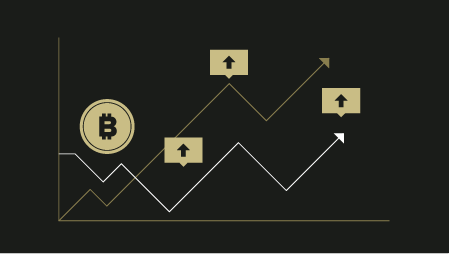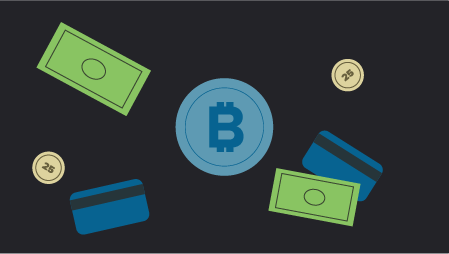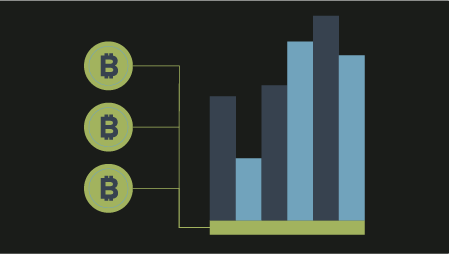Implementing blockchain in education allows businesses and educational institutes to build a secure learning and certification platform that can help to bridge the skills gap.
The global unemployment rate has reached a record low for the decade. According to an estimate, the global unemployment ratio dropped down to only 5%. It is the lowest since the global economic crisis of 2008. On the other hand, 45% of recruiters say that they cannot find the skills they need in an employee. What is the reason behind this? The answer is the “skills gap.” There is no agreed-upon definition of the skills gap. But in a business context, the skills gap can be defined as the difference between the skills required to complete a task and the skills that an employee possesses. Due to this difference in skills, an employee might not be able to complete the task given to him.
For instance, say a manufacturing company produces its goods with the help of complex machinery, and an employee does not know how to operate it. The employee cannot complete the assigned manufacturing task. Hence, the skills gap creates a shortage of workers. The shortage of workers reduces productivity, which further reduces the profitability of the business. Thus, the skills gap can hold back the economic growth of businesses. The adverse effects of the skills gap are not limited to individual businesses. It can also affect entire industries. For example, a 2018 study by a leading research company shows that the manufacturing industry can have an economic loss of $2.5 trillion over the next decade due to the skills gap. In response to this increasing skills gap, businesses must educate and train their employees for current and upcoming required skills. But, to bridge the skills gap, knowing the factors causing it is necessary. Once the factors are known, businesses can incorporate various techniques and technologies like AR, VR, and blockchain in education to bridge the skills gap.
What is causing the skills gap?
Skills required for a business task keep on changing with changes in various factors like technical tools, customer needs, and the global economy. And educational institutes cannot keep up with the pace of changing business needs because changing the education system is a lengthy process. Also, employers try to find and hire candidates who already have certain skills required for tasks specific to their businesses. Employers do this so that they do not have to train candidates after hiring them because training employees after hiring them requires both time and money. Hence lack of education for every skill and the recruiting trend of employers creates a skills gap.
Another reason for the skills gap is micro-credentials. Although micro-credentials themselves are not the reason, they are the major factors that contribute to a reason causing the skills gap. Micro-credentials are like certifications for small skills that a person learns. Instead of learning a broad field of study like biology for a long-term period, students or employees can learn smaller and specific fields like heart disease within the short-term.
On completing each micro-credential, they receive online badges or certifications. There are many credentials available. As per a report, there are 738,000 unique credentials only in the US. Thus, it becomes challenging for employers to verify every micro-credential mentioned on a resume, which causes resume fraud. And resume fraud is one of the major reasons that cause the skills gap. According to a study, 85% of candidates lie on their resume. These resume frauds mostly occur in the form of naming extra micro-credentials on resumes. And, employers need to perform online background checks and backdoor reference checks to spot these dishonest candidates, which are time and money consuming processes. Hence, sometimes employers show the reluctance of performing checks.
Also, with the advancement in technologies like AI, IoT, and AR/VR, the types of machinery used to operate different tasks in an organization have advanced. New machinery requires new skills to operate them, which is causing the skills gap. Blockchain can help create a learning platform that can be used by both employees and employers. The security, transparency, and traceability features of the blockchain can help businesses to bridge the skills gap.
How can blockchain in education help bridge the skills gap?
Employers are looking for candidates who are already diverse in their skills. And as a result of this hiring trend, students are taking proactive initiatives by learning many different micro-credentials. But as mentioned earlier, educational institutes are not able to provide education and training for every micro-credential. Hence, students try to learn these micro-credentials from online tutorials or various training boot camps. But, whom to trust still remains a major question for students. How will the students know whether the person who is teaching them have enough knowledge about that micro-credential? That’s where blockchain comes into the picture to answer this question. People who want to teach students a micro-credential can upload there degree or certification, which they would have received after completing their study or training for that micro-credential on the blockchain. They can make their certificates visible to all. Hence, students can view the qualifications and certifications of a teacher before taking education from them. Getting the opportunity of viewing the qualifications of a teacher before applying for training will encourage more and more students to learn various micro-credentials, thereby helping to bridge the skills gap. On completing a skill course or any micro-credential from teachers, they can provide certification or a digital badge to their students. Students can then upload their certifications on the blockchain platform. This will eliminate the need for students to carry their certifications for every job interview. Also, students or employees holding any digital badges can take their decision of who will be able to see their badges. Thus, they can take control of their professional data.
Employers are looking for candidates who are already diverse in their skills. And as a result of this hiring trend, students are taking proactive initiatives by learning many different micro-credentials. But as mentioned earlier, educational institutes are not able to provide education and training for every micro-credential. Hence, students try to learn these micro-credentials from online tutorials or various training boot camps. But, whom to trust still remains a major question for students. How will the students know whether the person who is teaching them have enough knowledge about that micro-credential? That’s where blockchain comes into the picture to answer this question. People who want to teach students a micro-credential can upload there degree or certification, which they would have received after completing their study or training for that micro-credential on the blockchain. They can make their certificates visible to all. Hence, students can view the qualifications and certifications of a teacher before taking education from them. Getting the opportunity of viewing the qualifications of a teacher before applying for training will encourage more and more students to learn various micro-credentials, thereby helping to bridge the skills gap. On completing a skill course or any micro-credential from teachers, they can provide certification or a digital badge to their students. Students can then upload their certifications on the blockchain platform. This will eliminate the need for students to carry their certifications for every job interview. Also, students or employees holding any digital badges can take their decision of who will be able to see their badges. Thus, they can take control of their professional data.
The skills gap will continue to impact the economies of every business. The only way to bridge the gap is by constantly educating your workforce and hiring candidates who have the skills to operate in your working environment. You can also make a learning curve with various courses for your employees and then provide them with certifications on completion of every course. They can then upload their certifications on a blockchain platform. Thus, by incorporating blockchain in education, organizations can encourage proactive learning from their employees and place them in the driver’s seat of their learning.




